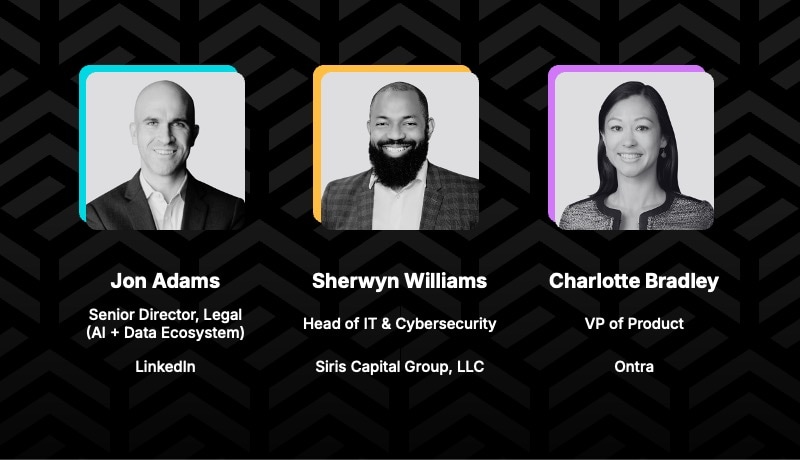Private equity chief technology officers play a pivotal role in driving digital transformation at firms and, in many cases, are charged with identifying opportunities for artificial intelligence implementation within portfolio companies. They often work side-by-side with a firm’s innovation or digital transformation team or an AI steering committee to simultaneously research and implement AI tools, update related policies, and negotiate their AI vendor contracts.
CTOs possess a blend of technical expertise and business acumen. They are responsible for scaling and innovating IT operations, while simultaneously mitigating cyberthreats. With new AI solutions appearing on the market almost daily, CTOs need to separate the wheat from the chaff to choose “future-proof” tools that will solve real problems without introducing unnecessary risks or disappearing in a few years. More than anyone at the firm, CTOs are uniquely positioned to understand how AI tools actually work, how the firm can leverage AI most effectively, and to champion adoption at their firms.
Set a forward-thinking internal strategy
A successful AI journey starts with a well-defined strategy. Working collaboratively with the general counsels, chief compliance officers, and senior leadership, spearhead the development of clear and comprehensive AI policies that ensure compliance, mitigate risks, and address the use of:
- Internally developed AI tools
- Third-party AI solutions
- Publicly available AI solutions that employees may use
Effective communication is paramount to fostering a culture of responsible AI usage. Communicate the developed policies clearly and regularly to all teams, ensuring transparency and building trust in the firm’s AI initiatives.
Identify practical use cases for AI
CTOs can work with various strategies and departments to identify areas where AI can deliver tangible benefits while minimizing the risk of errors.
Experts recommend CTOs start with:
- Clear objectives: Define clear objectives for AI adoption, ensuring AI efforts align with desired business outcomes.
- High-volume and repetitive tasks: AI excels at automating time-consuming, data-driven, repetitive tasks, freeing up human resources for more strategic endeavors.
- Use cases with a low risk and cost of errors: Early adoption should focus on tasks with minimal downside if an AI tool makes a mistake.
AI can deliver both short-term and long-term benefits, but it’s easier to prove its value and get internal buy-in by starting with smaller projects that quickly deliver ROI. These small wins can help set the stage for larger, more complex use cases and projects.
Establish AI best practices
While actively pursuing the benefits of AI, mitigate potential risks by establishing best practices for:
Procurement
After identifying a specific use case for an AI tool, assess the pros and cons of “rent, buy, or build” approaches based on firm strategy, timelines, and cost factors. If an industry-specific tool isn’t available, and the firm is leaning toward building a tool, consider a pilot program with a trusted AI vendor in order to take advantage of existing AI capabilities and powerful commercial large language models (LLMs).
Vendor selection
Evaluate AI vendors (and other software vendors that have integrated AI into their tools) by scrutinizing their security practices and data protection protocols and requiring documentation regarding their AI models’ accuracy, consistency, and hallucinations. (Hallucinations is a term coined to describe instances in which LLMs provide false answers as if they were facts.)
Implementation
Ensure seamless integration of generative AI (GenAI) tools with existing technology infrastructure and data sources. Failing to establish necessary integrations means the AI tool won’t be able to consolidate information, improve collaboration, and provide the expected return on investment. Additionally, collaborate with AI vendors to establish realistic success criteria for implementation and ongoing use of the AI tool to ensure the firm has the ability to measure ROI.
Ongoing use
Develop and promote guidelines for when and how employees may use AI tools and determine how to monitor and document employee compliance with AI policies to ensure data security and regulatory compliance.
Leverage vendor knowledge and experience
Onboarding the first few AI vendors may be an eye-opening experience. Many private equity firms are finding that standard contract terms, even those used with previous technology solutions providers, are inappropriate for AI-powered solutions.
Prepare to collaborate with the AI vendor on appropriate contract terms rather than view negotiations as an adversarial process. Many private equity firms are learning a great deal from their vendors during the negotiation process regarding how the AI models work and how they can expect the solution to evolve.
Don’t be afraid to ask to communicate directly with an AI vendor’s engineering team. Trustworthy vendors will ensure private equity CTOs receive all the information they need to comfortably and confidently finalize an agreement and take full advantage of the AI tool.
Prioritize implementation and change management
AI adoption may necessitate changes within the firm’s technology architecture, such as upgrading IT infrastructure, managing data pipelines and access controls, and facilitating integration with existing systems.
During this process, prioritize implementing additional cybersecurity measures to safeguard sensitive data and mitigate potential AI risks. Heightened cybersecurity may involve developing data tagging frameworks for sensitive information, establishing stricter access controls, and regularly re-evaluating vendors’ security practices.
Additionally, continuous monitoring is essential — monitoring both the system for vulnerabilities and threats and employees for compliance with the firm’s AI policies.
It’s crucial not to overlook change management throughout this journey. Since the firm’s employees use AI tools, they need to be comfortable and confident leverage the tools’ features. Provide training tailored to individual roles and skill levels, including instruction focused on AI capabilities and limitations, writing effective prompts to generate relevant and accurate outputs, and interpreting and leveraging AI outputs in the individual’s role.
The CTO as a catalyst for growth
The CTO’s role in the AI journey goes far beyond simply overseeing technology. They are champions, strategists, and risk managers, leading the firm toward a future powered by AI. By embracing this forward-thinking approach, private equity firms can unlock a new era of efficiency, performance, and competitive advantage




